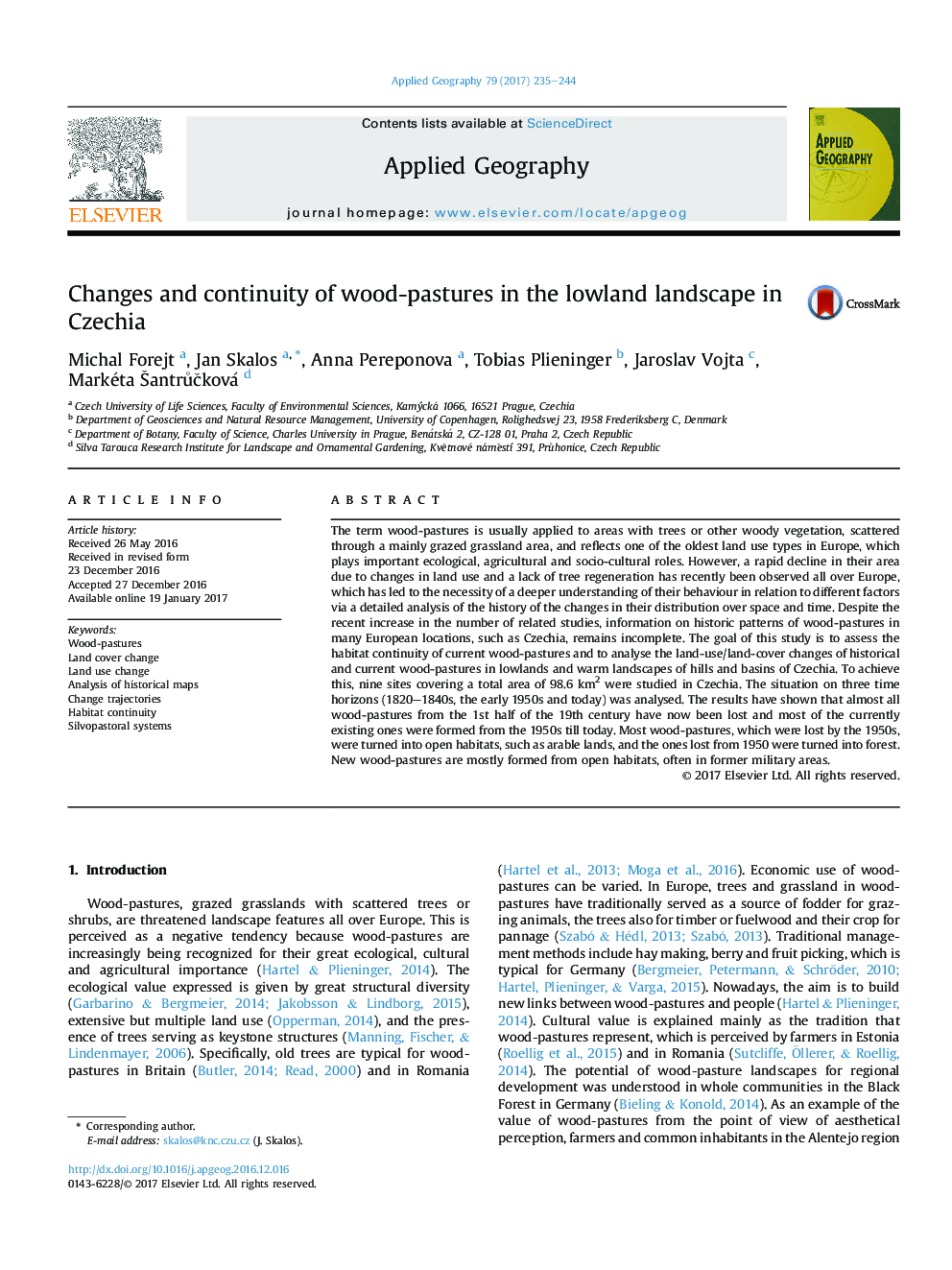| کد مقاله | کد نشریه | سال انتشار | مقاله انگلیسی | نسخه تمام متن |
|---|---|---|---|---|
| 6458446 | 1421038 | 2017 | 10 صفحه PDF | دانلود رایگان |
- Wood-pastures play important ecological, agricultural and socio-cultural roles.
- A rapid decline due to changes in land use and a lack of tree regeneration has recently been observed all over Europe.
- Cadastral districts where wood-pastures covered min. 0.5% were chosen to study the habitat continuity.
- Despite the expansion of wood-pastures, almost all wood-pastures from the 19th century have been lost, mostly until 1950s.
- New wood-pastures were mostly formed from open habitats, often in former military areas.
The term wood-pastures is usually applied to areas with trees or other woody vegetation, scattered through a mainly grazed grassland area, and reflects one of the oldest land use types in Europe, which plays important ecological, agricultural and socio-cultural roles. However, a rapid decline in their area due to changes in land use and a lack of tree regeneration has recently been observed all over Europe, which has led to the necessity of a deeper understanding of their behaviour in relation to different factors via a detailed analysis of the history of the changes in their distribution over space and time. Despite the recent increase in the number of related studies, information on historic patterns of wood-pastures in many European locations, such as Czechia, remains incomplete. The goal of this study is to assess the habitat continuity of current wood-pastures and to analyse the land-use/land-cover changes of historical and current wood-pastures in lowlands and warm landscapes of hills and basins of Czechia. To achieve this, nine sites covering a total area of 98.6Â km2 were studied in Czechia. The situation on three time horizons (1820-1840s, the early 1950s and today) was analysed. The results have shown that almost all wood-pastures from the 1st half of the 19th century have now been lost and most of the currently existing ones were formed from the 1950s till today. Most wood-pastures, which were lost by the 1950s, were turned into open habitats, such as arable lands, and the ones lost from 1950 were turned into forest. New wood-pastures are mostly formed from open habitats, often in former military areas.
Journal: Applied Geography - Volume 79, February 2017, Pages 235-244
